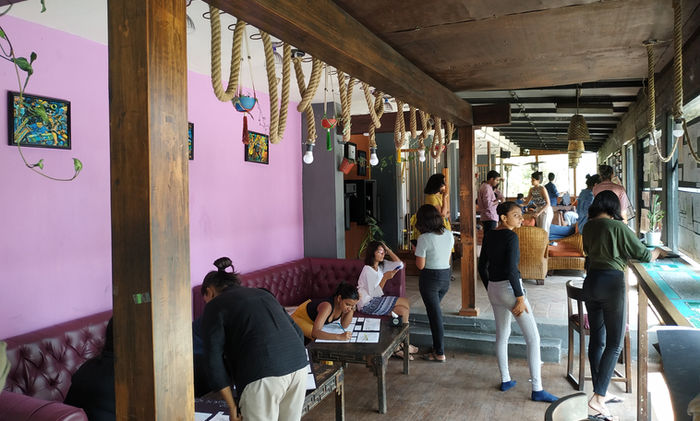
Kathmandu Workshop
Workshop “Public Open Spaces in Kathmandu Valley” was conducted on June 4-8th, 2019 in Patan and Kathmandu city. The broad aim of the workshop was to understand the nature of historical public open spaces in the valley cities and figure out ways to creatively represent the same. This intense field-based workshop was conducted by Prof. Pratyush Shankar.
In this theme, we try and understood how the nature, perception, and use of open spaces in and around particular building/s is very much the result of the architectural typology of the particular building. For example, a courtyard based building has a certain character of open spaces, which will be very different from the one that is linear or a building that is extremely transparent/opaque. The aim was to represent this conditions in various part of the city of Patan in a creative fashion
The premise here is that water structures in Kathmandu valley have performed many other public functions apart from being a source of water. For example, they activate existing public squares, they create a sheltered cocoon environment for community gathering, they are excellent for women as social spaces, they have a larger ecological function, they maintain ecological health and are thriving spaces for flora and fauna.
Open spaces in Kathmandu valley show immense variation and contrast in a very small area. One observes that the spaces of a certain typology move or change into another, in a very smooth or articulate fashion. This transition gives a level of richness to the experience of the city, which defines the character of the Kathmandu valley.
The objective here is to represent the fluidic nature of these transition spaces and how they mutate to form a variety of open spaces.
Social spaces, as described in “Production of Space” by Henry Lefebvre, assumes that we make space by our social actions in the public sphere. This also holds true for spaces of Kathmandu valley because of a variety of urban performances that happen throughout the day. For example, religious processions, protests, music, dance, theatre etc
About
Workshop “Public Open Spaces in Kathmandu Valley” was conducted on June 4-8th, 2019 in Patan and Kathmandu city. The broad aim of the workshop was to understand the nature of historical public open spaces in the valley cities and figure out ways to creatively represent the same. This intense field-based workshop was conducted by Prof. Pratyush Shankar as part of the CityLabs initiatives.
The open spaces in cities in Kathmandu valley are unique expressions of urbanity from the point of view of their public-ness and from the perspective of legible designs. Starting from the small courtyards in the compact housing (such as Bubahal in Patan) to the larger ones with Buddhist stupas and ending in the city level public open space such as the Durbar Square; these cities have developed a unique expression around the idea of open spaces.
Day 1: Architectural typology and public open spaces
Day 2: Urban nature of water structures
















